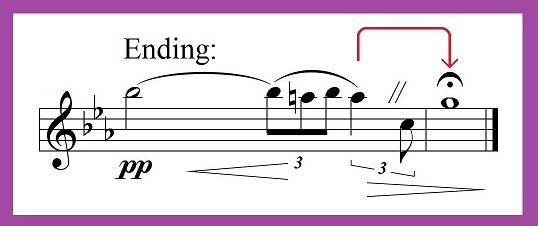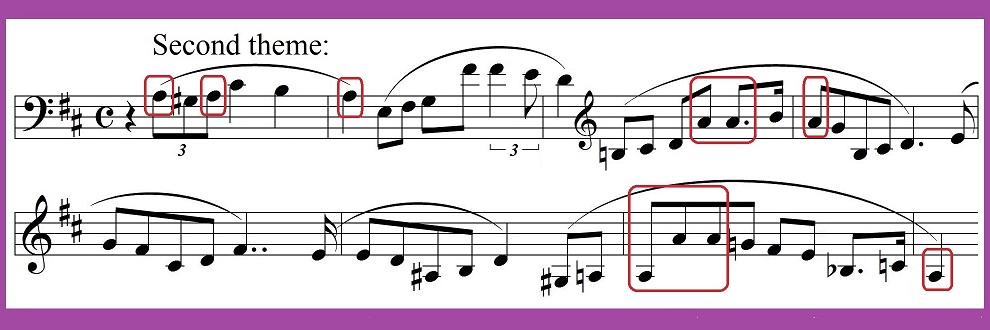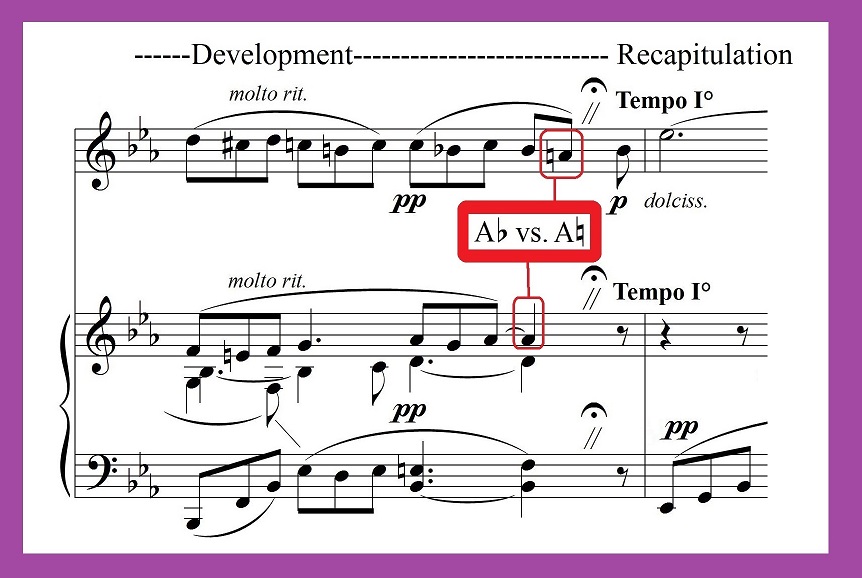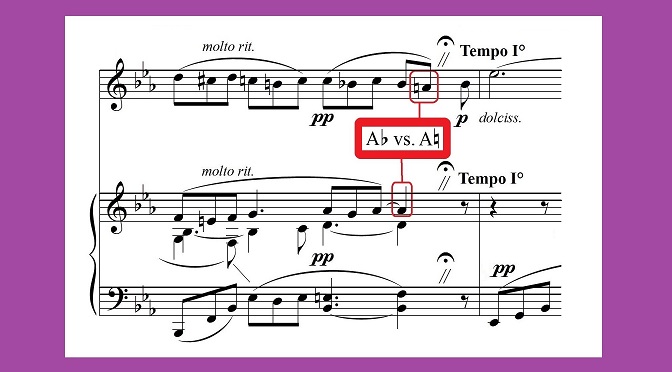A is for Ambiguity
An intriguing feature of my Romance for Oboe and Piano is the ambiguity between A-natural and A-flat. In the piece’s home key of E-flat major, A-natural is a half-step above the normal scale degree and, depending on context, can be heard either as a reference to Lydian mode or as a chromatic lower neighbor to the dominant.

Where the A-natural fails to resolve upward to the dominant, its modal implications are obvious. That happens prominently near the beginning in the oboe part and imparts a rather mournful quality to the melody.

The ending invokes the modal A-natural in an especially poignant way. At the end of a long ritardando, the oboe sounds the A-natural one last time over tonic harmony, allowing it to “hang in the air” across a caesura before resolving downward to G.

The second melody is initially presented in the remote key of D major, and curiously that melody also begins and ends on the same pitch class A, which is the fifth scale degree in that secondary key. More generally, the second melody seems to revolve around pitch class A.

The three-note lower-neighbor figure from the piece’s first measure (third beat) plays a large role in the development section, so not surprisingly A-natural frequently appears as a lower neighbor in that figure. At the very end of the development, the oboe executes a descending sequence of lower-neighbor figures, eventually coming to rest on the A-natural as a chromatic lower neighbor. Meanwhile, the piano part stops on a dominant-seventh chord (Bb7).

The juxtaposition of the A-natural and A-flat creates an unusual dissonance, although it sounds gentle within the pianissimo context. There is another caesura, and then the dissonance is resolved as the recapitulation begins.

